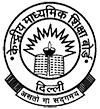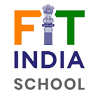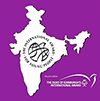Visual Arts at Primary School
The study of arts and crafts is essential for developing not only the aesthetic sensibility but also for learning how to manipulate materials and developing attitudes and skills essential for work. The curriculum introduces children to practical life skills and work experiences of varied kinds and the approach is participatory, interactive, and experiential rather than instructive. The main goals of the art program in class I and II is studying objects and making a figurative composition using various materials like crayons, poster colours and clay. In classes III to V the students are introduced to folk and traditional art forms like alpana, mandana, rangoli, tie and dye etc. and also to sculpture using clay and papier mâché.
Visual Arts at Middle School
The visual arts curriculum comprises interrelated activities in making art and in looking at and responding to art. It presents a range of activities in perceiving, exploring, responding to and appreciating the visual world. Regional craft traditions and their modern developments, as part of the national heritage, are among those art forms. It promotes observation and ways of seeing and helps the child to acquire sensitivity to the visual, spatial and tactile world and to aesthetic experience. At this stage of school education children can handle a little more complex materials and themes. So far whatever they have grasped, developed and experienced earlier can be developed further.
At the Middle school level, art education programme comprises handling of the materials for drawing, painting, collage, clay modelling and construction of puppets; creating artistic things by free expression method, learning simple concepts of visual arts, knowledge of works of well known artists both contemporary as well as historical etc. Emphasis is laid on the use of learner’s own imagination and development of his/her own concepts and expression through observation and exploration. Learners are enabled to develop a sense of organization and design because aesthetic arrangements permeating all life become source for joy and satisfaction.
The activities from events of life around nature and environment, human and animal figures, free hand sketching, designing of book covers, cards, folders, tie and dyeing, printing and embroidery to create a textile etc. are learnt at this stage. At this stage, children develop a sense of perspective, proportion, depth, light and shade, tactile feeling by using different media like pencil, pastel, poster colour, watercolour, collage, pen and ink/ brush and ink, mixing mediums, linocut, computer as a tool of expression etc. Objects, people, traditions, environment and experiences are few of the themes that Art education at this level revolves around.
Visual Arts at Secondary School
The experience of free and creative expression, acquaintance with the basic elements of arts and design at upper primary stage have helped the students develop required aesthetic sensibility and skills in different media and techniques, which should enable them to select visual arts as medium of expression at secondary stage of school education. In addition to providing joyful experience, refining aesthetic sensibilities based on earlier experiences, to expose the learner to the cultural diversity of the country through folk art forms, local specific arts and other cultural components leading to an awareness and appreciation of national heritage, to develop a perspective of artistic and creative expression through experimentation with different tools, techniques and medium in two and three dimensional visual art forms are the objectives that determine Art Education at the Secondary level.
Drawing and Painting, Collage making, Print making, Photography and computer Graphics Rangoli/ Mandna/ Wall painting (State/region specific traditional art forms) constitute the broad curriculum at this stage. Plaster of Paris, different types of clay, papier mâché, terracotta, sketching practice, making of armature, pottery (handmade) and ceramic work are included for three-dimensional expression. To express original experiences freely and spontaneously, learning to observe, development of sense of perspective, proportion, size, depth, light and shade, tactile feeling, season, time, mood etc. are some of the components children at this stage learn. Basic knowledge of human body and its proportion, compositions based on various themes, knowledge of local/traditional art forms and sense of perspective are included in the syllabus. Students during two years of secondary stage must be allowed to work in at least three media using pencil, pastel, water or oil based colour, collage, linocut, pen and ink, mixed media.
Visual Arts at Senior Secondary School
Art Education takes the form of an elective subject namely Fine Arts at the Senior Secondary Stage. At this stage a student may offer any one of the following courses - Creative Painting or Sculpture or Applied Arts. Students may decide on their choice from among creative painting/sculpture/applied Art at the initial stage, but the practical classes in Drawing: Nature and Object Study are compulsory and common for students of all the three subjects with the same objectives. Under the heading ‘sessional work’, students of all the three subjects (Painting, Sculpture and Applied Arts) are also expected to work on group activities such as murals in mosaic etc. for application of arts in school and the community.
‘Elements of Composition’ like point, line, form, colour, tone, texture and space and ‘Principles of Composition’ like unity, harmony, balance, rhythm, emphasis and proportion, abstraction and stylization characterize the curriculum for the compulsory paper ‘Painting’. Drawing and Painting syllabus also focuses on concepts of foreshortening, perspective, eye-level, fixed point of view, vanishing point, ratio proportion sketching, proportion sketching, drawing, light and shade, painting still-life, landscape, anatomy, vertical, horizontal, two and three dimensional, transparent and opaque. The curriculum for ‘Sculpture’ focuses on art concepts like relief and round sculpture, modeling with clay, terracotta, carving in wood and stone bronze casting, metal welding. Similarly ‘Applied Arts’ curriculum pivots around activities like book cover design and illustration, cartoon, poster, advertisements for newspaper, magazine, hoardings and T.V. etc., photography, computer graphics, animation, printing processes.
Generally in all the three choices, materials like paper, pencil, water acrylic colours, tempera colours, poster colours, pastel colours, water proof ink, canvas, hardboard are used and the media of composition are commonly collage, mosaic, painting, mural, fresco, batik, tie and dye.











